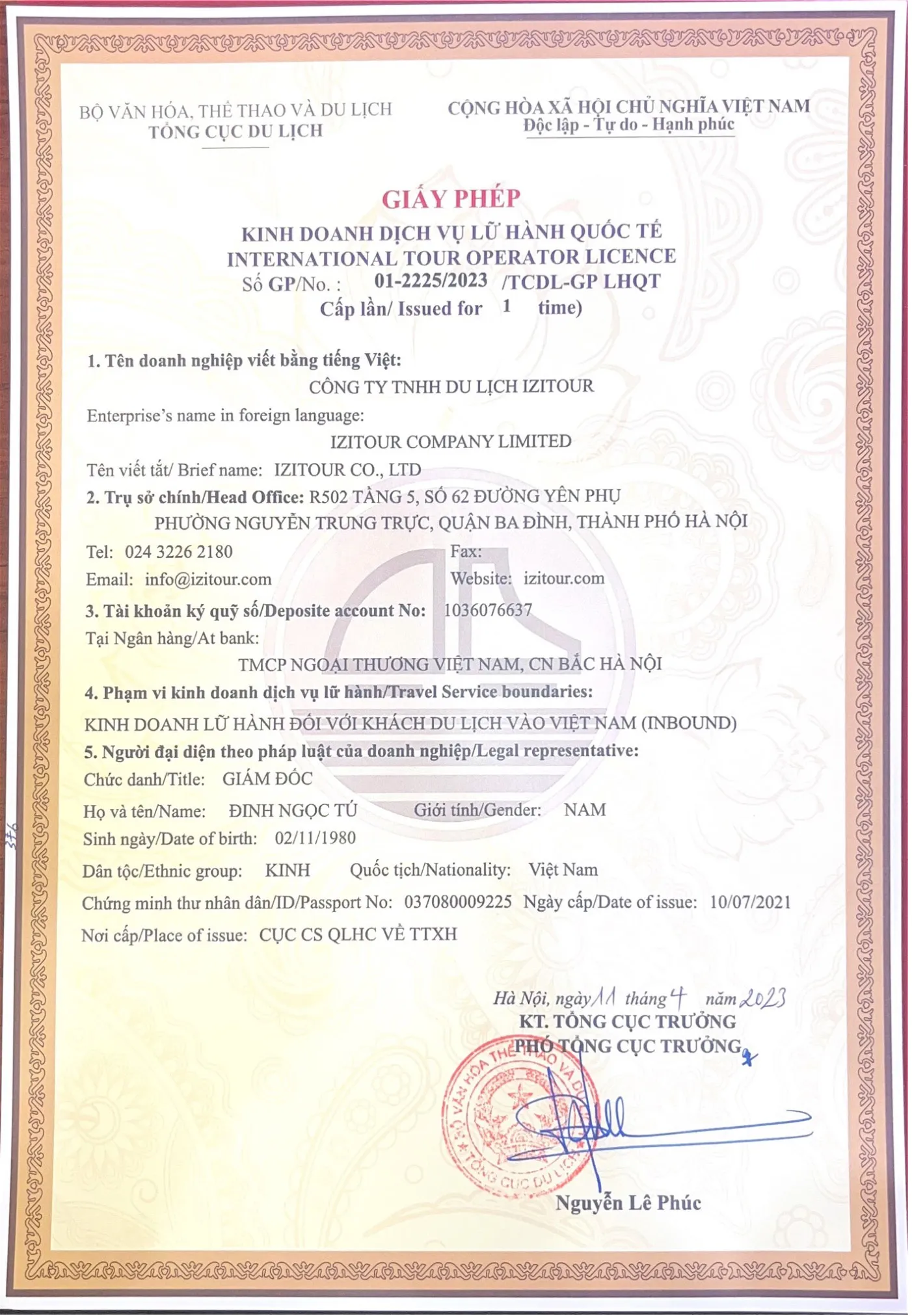Hanoi countryside offers a stunning and essential counterpoint to the city’s electric energy. While Hanoi is celebrated globally for its bustling Old Quarter and vibrant urban life, it takes just a short 30- to 40-minute drive to uncover a different, timeless Vietnam. This region is peaceful, incredibly lush, and deeply rooted in the ancient traditions of the North. Here, the villages around Hanoi, with their quiet bamboo groves, historic pagodas, and authentic local markets, provide a striking and much-needed contrast to the capital's metropolitan buzz.
For travellers dedicated to finding a truly authentic travel experience—one that is local, rural, and intimate—exploring these traditional villages is the perfect choice for a day trip from Hanoi. From meeting warm-hearted locals and witnessing generations-old traditional crafts to immersing yourself in the serene nature, the Hanoi countryside reveals a softer, more genuine soul of Vietnam, one that is just as captivating as the city itself.
- 1. What makes the Hanoi countryside so special?
- 2. Unmissable rural villages near Hanoi
- 2.1. Duong Lam Ancient Village
- 2.2. Bat Trang Pottery Village - Traditional Craft and Cultural Visits
- 2.3. Chuong Conical Hat Village
- 2.4. Cu Da Ancient Village
- 2.5. My Duc
- 2.6. Dong Ngac Ancient Village
- 2.7. Co Loa, Dong Anh - Historic Citadel and Ancient Legends
- 2.8. Nom Village, Hung Yen
- 2.9. Ha Thai Lacquer Village
- 3. Transport Options to Explore the Hanoi Countryside
1. What makes the Hanoi countryside so special?
The countryside surrounding Hanoi charms visitors with its simplicity and almost eternal atmosphere. Stepping through a village gate feels like travelling back in time, rediscovering a Vietnam of yesteryear—humble, peaceful, and profoundly authentic. Here, you won't find glittering skyscrapers, busy shopping centres, or traffic-saturated streets. Instead, you'll see rice paddies stretching as far as the eye can see, ancient houses with faded red tile roofs, and worn lime walls bearing the silent traces of decades. Along the small country lanes, you might encounter farmers leading buffalo to the field, bales of straw drying after the harvest, or groups of children playing traditional Vietnamese games that one might have thought were forgotten.

Take the time to meet the village elders—those who have watched this land change and mature. Their stories will offer you a sincere and nuanced perspective on Vietnam, past and present: a country where tradition and modernity coexist, where family ties remain deeply rooted, and where traditional craft skills, passed down from generation to generation, continue to live and evolve.
The traditional craft villages—such as Chuong conical hat village, Bat Trang pottery village, or the hamlets along the Duong River and the plains of Thanh Oai and Hoai Duc—preserve practices handed down for generations. Visitors can observe artisans at work, participate in workshops, and sample authentic local specialities. Thanks to their proximity to the capital, these day trips from Hanoi offer an accessible and authentic immersion: a perfect bucolic interlude to better understand the soul of Northern Vietnam.
2. Unmissable rural villages near Hanoi
2.1. Duong Lam Ancient Village
Duong Lam Ancient Village, a prized jewel of the Hanoi countryside, is situated about 45 km from the downtown. It's one of the few Vietnamese villages to have preserved its traditional architecture intact, creating a serene, almost timeless atmosphere that feels like a genuine window into the Vietnam of the past.
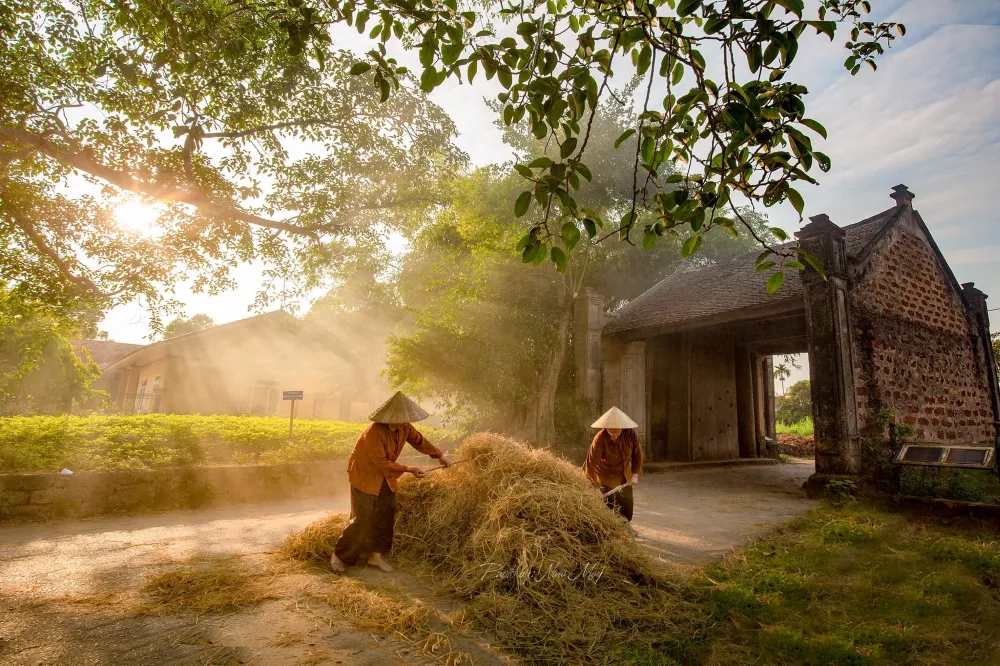
Must-see sites in Duong Lam:
- Duong Lam Communal Temple: Built nearly 400 years ago, this temple is the spiritual heart of the village. It testifies to local history and traditions, offering a glimpse into the religious and cultural life of the inhabitants.
- Duong Lam Ancient Well: A symbol of daily life in the past. Standing by this well, you can imagine generations of villagers drawing water and exchanging stories under the rural sky.
- Giang Van Minh's House: Built in 1845, this house is dedicated to Giang Van Minh—a mandarin from the Later Le Dynasty famous for his role in preserving national honour during his travels to China. Today, it serves as both a fascinating tourist site and a place for patriotic education for the younger generations.
- Ngo Quyen Mausoleum and Temple: Located on Cam Hill, these monuments commemorate the legendary King Ngo Quyen. Although the site is relatively small, its setting is meticulously maintained, with trees, flowers, and ubiquitous greenery, creating a peaceful, sacred, and harmonious space. Visitors can feel the deep veneration of the locals for one of Vietnam's national heroes.
- Mr. The’s Ancient House: A must-visit in Duong Lam, this traditional Vietnamese house is famous for its fermented soybean sauce craftsmanship. Upon entering the courtyard, the characteristic aroma of the aligned sauce jars greets you, offering an authentic insight into daily life and local culinary skills.
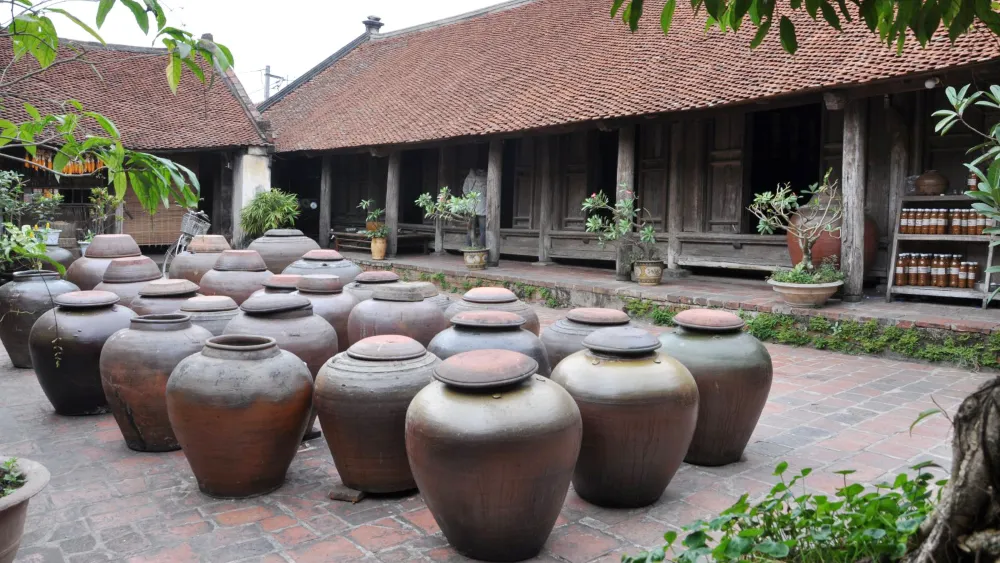
Visitors can explore the village by bicycle, wander through its ancient alleys, and admire the beauty of the surrounding rural landscapes. They will have the opportunity to meet the residents, discover their daily routines, and immerse themselves in the village’s authentic atmosphere. Don't leave Duong Lam without tasting its local specialities:
- Mia Chicken: A local chicken renowned for its tender and fragrant meat, often carefully roasted or grilled.
- Che Lam: A traditional sweet treat made from sticky rice, palm sugar, and nuts, perfect for a short gourmet break or as a sweet souvenir.
These unique flavours prolong the cultural experience and make the visit even more memorable.
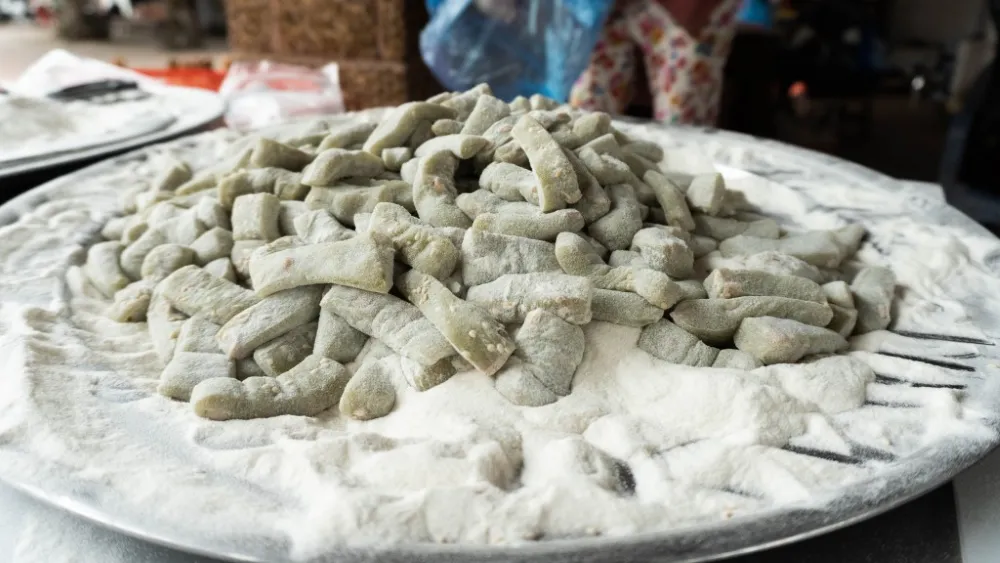
>> See more: Duong Lam Ancient Village Beauty
2.2. Bat Trang Pottery Village - Traditional Craft and Cultural Visits
Famous throughout Vietnam, Bat Trang is a centuries-old traditional craft village, renowned for its fine ceramics and craftsmanship passed down through generations. Just about thirty minutes from the centre of Hanoi, this village offers a lively immersion into the art of traditional pottery.
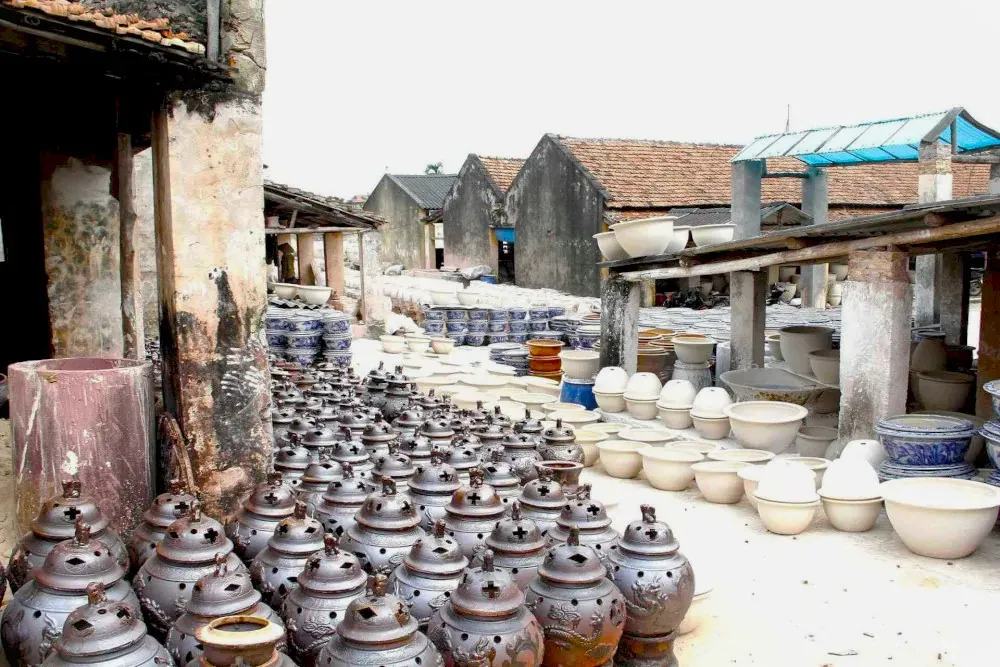
In the narrow streets, workshops, ancient kilns, and artisan shops follow one another. Visitors can observe the manufacturing stages, from shaping to glazing, and then try their hand at moulding a clay object themselves—a highly appreciated experience for families and curious travellers. Combining a village atmosphere, artisanal heritage, and local creativity, Bat Trang is one of the most emblematic villages near Hanoi, ideal for a cultural and interactive outing.
2.3. Chuong Conical Hat Village
About twenty kilometres southwest of Hanoi, Chuong Village is one of the birthplaces of the famous non la, the Vietnamese conical hat. Here, almost every household participates in this ancestral craft: cutting palm leaves, drying them in the sun, carefully stitching the layers... Every gesture is precise, passed down from generation to generation.

Strolling through the village, you can hear the soft sound of needles and see the conical hats piled up outside houses, ready to be sold at local markets. Visitors can observe the entire process or even try stitching a few points. Chuong offers a rare glimpse into rural artisanal Vietnam, a peaceful place where time seems to slow down and where the simplicity of daily life becomes a true cultural richness.
Chuong Market – A must-visit
The general market in Chuong Village is held daily, but the hat market takes place only six times a month, on the following dates of the lunar calendar: the 4th, 10th, 14th, 20th, 24th, and 30th. It mainly sells hats and the materials needed to make them. From 6 am, the market is already bustling with locals coming to shop. Visitors lucky enough to attend one of these markets can discover a unique facet of local culture: a living and precious traditional Vietnamese market that distinguishes Chuong Village.
2.4. Cu Da Ancient Village
Peacefully situated on the banks of the Nhue River for four centuries, Cu Da Ancient Village has never allowed time to erase its charm. Life here retains many traditional and ancient features while remaining lively and dynamic, never overwhelmed by the pace of the capital's modern cities. Even today, Cu Da preserves the authentic image of a traditional Northern Vietnamese village, with its village gate, ancient trees, and the architecture of its communal temple courtyard.
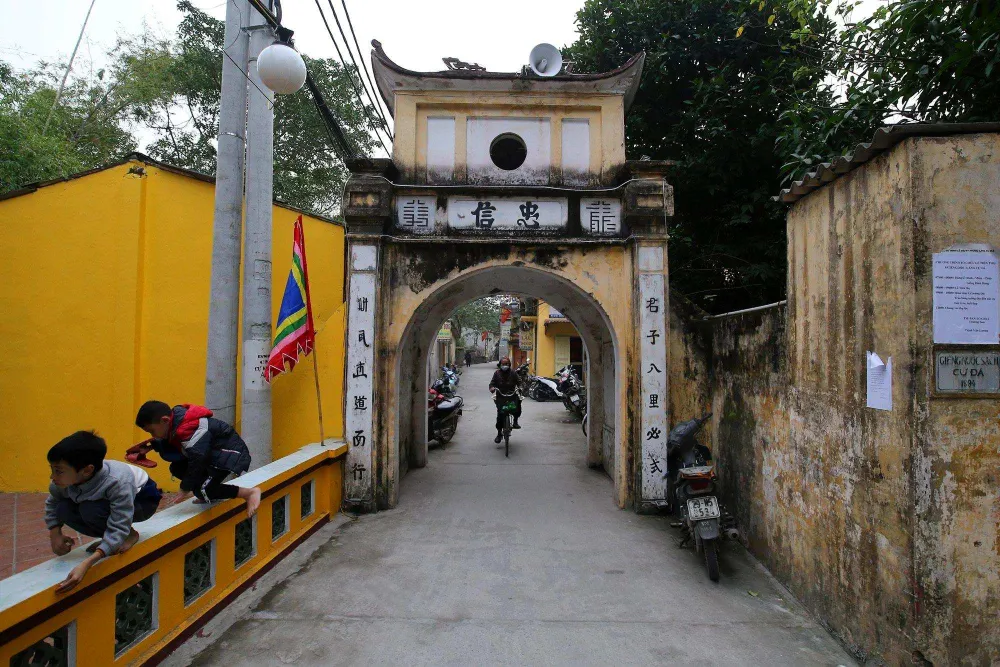
The village is distinguished by its unique architecture, mixing the ancient Vietnamese style with influences from the French colonial era, which adds a picturesque and singular touch. Its narrow cobblestone alleys, weathered ochre walls, and old wooden doors create an authentic, slightly melancholic atmosphere that appeals to travellers seeking rural charm.
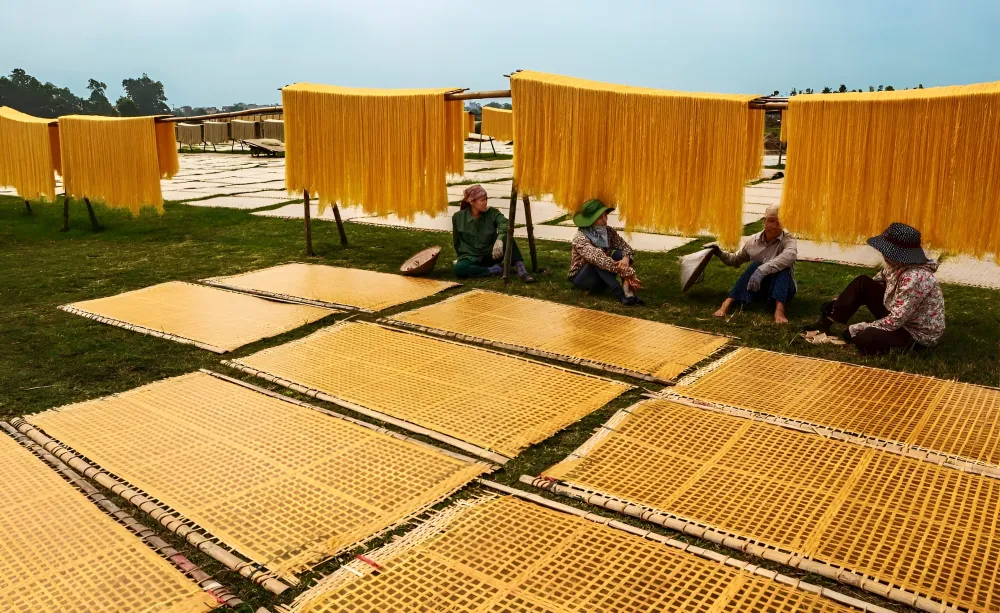
Cu Da is also renowned for its traditional artisanal crafts, such as the production of miến dong (rice vermicelli) and tương (fermented soybean paste). You can observe locals spreading noodles in the sun or preparing sauces in the inner courtyards. These workshops and skills add a touch of life and colour, making a visit to the village even more enriching for travellers curious to discover the cultural and artisanal heritage around Hanoi.
2.5. My Duc
Located southwest of Hanoi, My Duc offers a true haven of peace away from the urban bustle. The region is dotted with rice paddies, picturesque small villages, and tranquil waterways, ideal for walking or cycling. Visitors can admire the typical landscapes of the Red River Delta, observe the locals in their daily lives, and immerse themselves in Vietnamese rural life.

An unmissable stop is the Perfume Pagoda, nestled in the heart of this green countryside. The site, surrounded by hills and winding rivers, is perfect for a photographic stroll or a contemplative break. The surrounding trails allow you to walk alongside the rice fields and enjoy the changing colours throughout the day, offering authentic and serene panoramas.
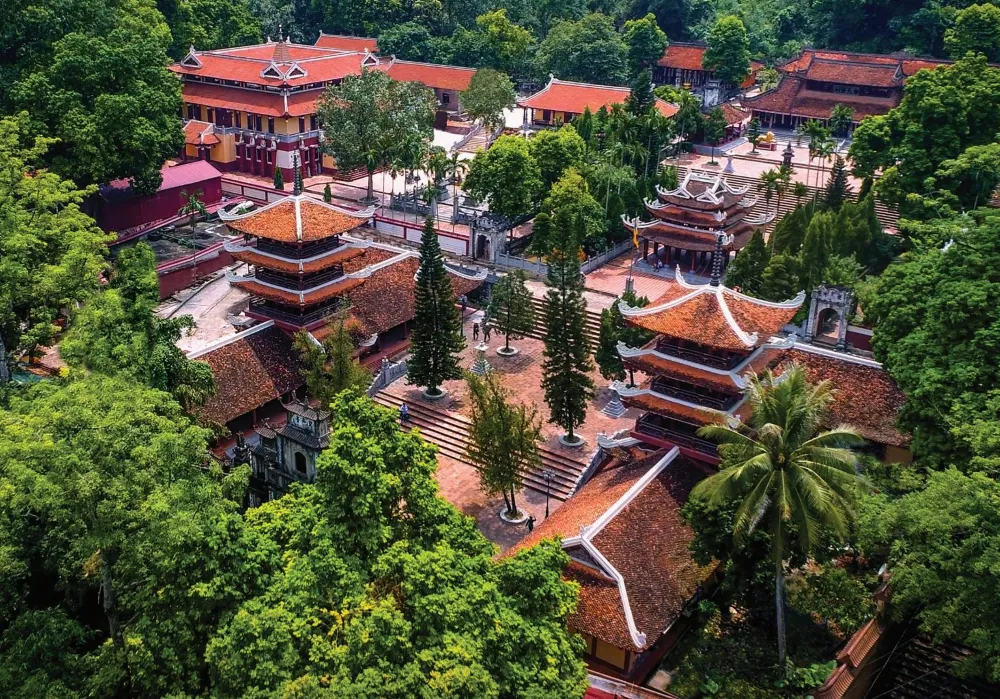
My Duc is an ideal place to combine culture, nature, and immersion in the Vietnamese countryside.
During your visit to the My Duc region, do not miss tasting some local specialities that will delight your taste buds: Che Lam (A sweet and chewy dessert made from sticky rice, roasted peanuts, fresh ginger, and malt) and Banh cu mai (a simple but tasty pastry, prepared from a typical tuber of the region).
2.6. Dong Ngac Ancient Village
Located in the northwestern suburbs of Hanoi, Dong Ngac Ancient Village is renowned for its tradition of scholarship and is often nicknamed the Village of Scholars. The village is also famous for its traditional architecture and peaceful atmosphere. The village is traversed by small alleys lined with ancient houses with tiled roofs, reflecting the typical charm of the rural villages in the Red River Delta.
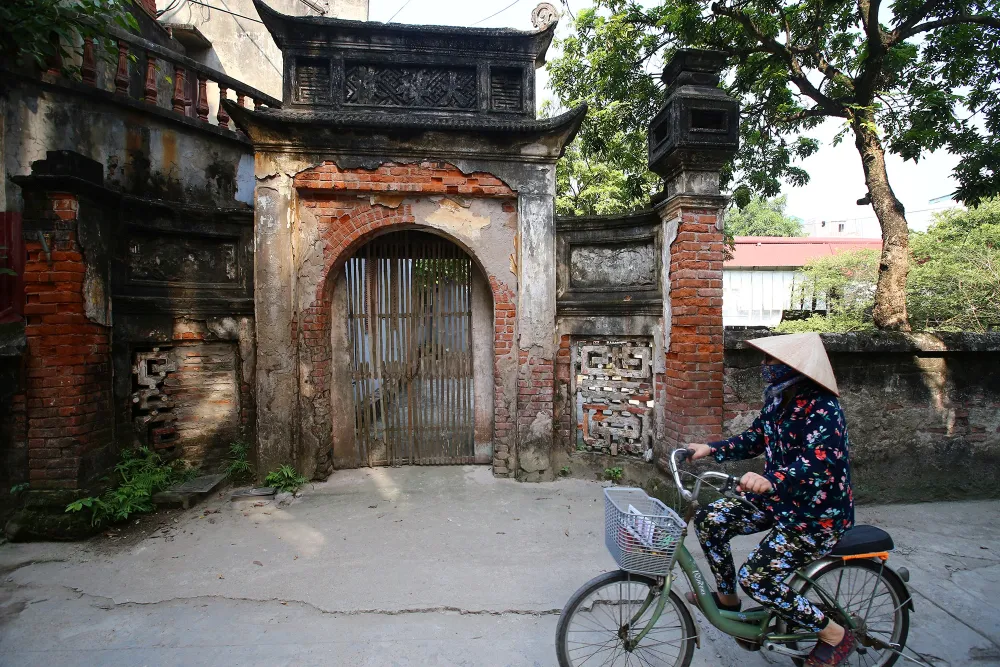
Dong Ngac is also recognised for its local crafts, such as the making of carrying poles, bamboo weaving, and traditional decorative objects. By strolling through the village, you can observe locals working in their workshops, learn their techniques, and sometimes even participate in the creation. On the gastronomic side, Dong Ngac delights visitors with its universally appreciated local specialities, such as Pork sausage and Spring Roll.
This village offers an authentic glimpse into Vietnamese rural life and is an ideal stopover for discovering the cultural and artisanal heritage of the Hanoi region.
2.7. Co Loa, Dong Anh - Historic Citadel and Ancient Legends
Co Loa, located in the Dong Anh district, is an ancient city rich in history and legends. The Co Loa Citadel, also known as Loa Thanh, is an unmissable site: the ancient capital of the Au Lac kingdom, it was built in the 3rd century BC. This emblematic place is linked to the legend of King An Duong Vuong and the tragic story of My Chau and Trong Thuy. Surrounded by moats and spiral ramparts, Co Loa offers visitors a fascinating dive into the past, where every stone seems to recount centuries of history and legendary battles.
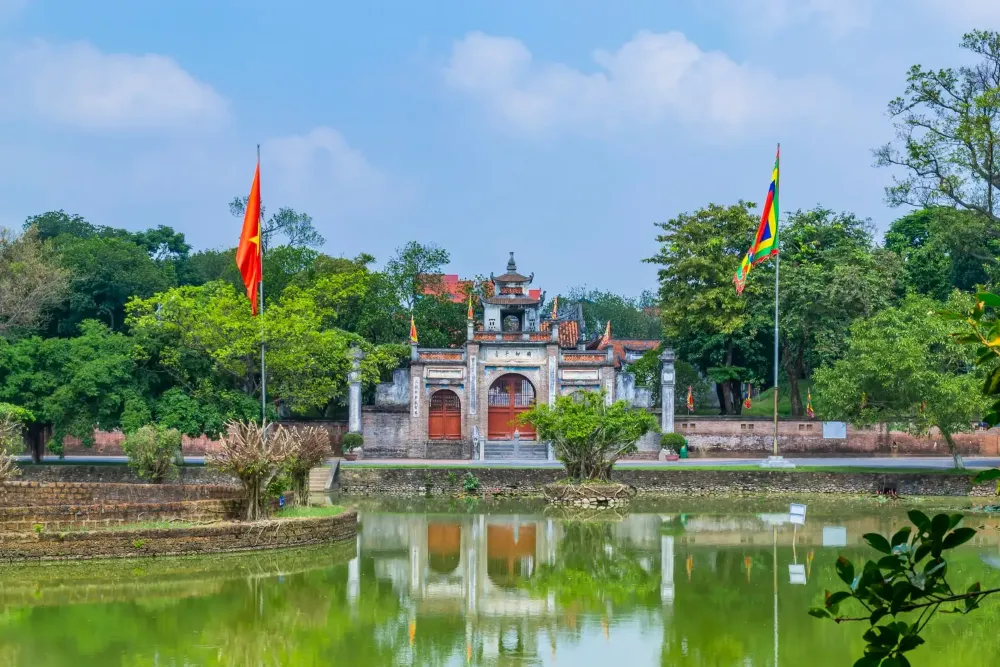
The village and the citadel also house artisans and local markets where typical products such as rice cakes and traditional objects can be found. The combination of historical heritage, local culture, and natural landscapes makes Co Loa essential for travellers curious to discover an unknown side of the Hanoi countryside.
2.8. Nom Village, Hung Yen
The final stop on our tour is Nom Village, in Hung Yen province. Located just 30 km from Hanoi, Nom Village is an ideal stop for those seeking peace and cultural authenticity. Stepping through the moss-covered gate, one immediately feels an inviting tranquility, like an echo from the past. The atmosphere is typical of Northern Vietnam: ancient houses, traditional markets, centuries-old banyan trees, wells, and temple roofs... all the elements composing a perfect picture of the Vietnamese countryside.

Among the most remarkable symbols of the village is Nom Temple, or Linh Thong Co Tu. Built under the Le Dynasty, it houses over a hundred terracotta statues, each expressing a unique posture and expression, testifying to the refined craftsmanship of the ancient masters.
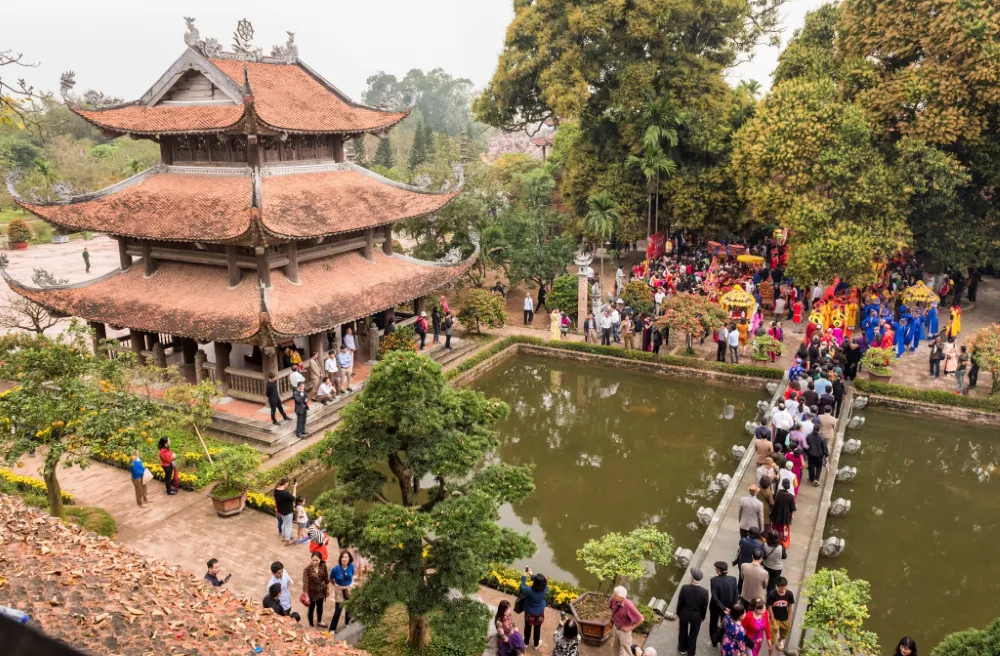
Nom Communal House is also an emblematic place. This is where traditional festivals and rituals are held in homage to the heroes and protective deities of the village. The processions and ceremonies at the beginning of the year bring animation and strengthen community ties, thus preserving a precious cultural and spiritual heritage.
Finally, Nom Market, located in the heart of the village, is a must-visit. One of the rare rural markets in the North to have retained its authenticity, it is held according to tradition with its red brick buildings, moss-covered roofs, and ancient trees that create a setting steeped in nostalgia and charm.
See more: Nom Village - A Unique Ancient Village Near Hanoi
2.9. Ha Thai Lacquer Village
Located approximately 20 km south of central Hanoi, Ha Thai Village is one of the capital's seven most emblematic craft villages, renowned for its ancestral art of lacquerware. According to the locals, this craft has been practised here since the 17th century. Later, in the 20th century, the first artists trained at the Indochina Fine Arts School enriched this art by exploring new pigments and introducing innovative sanding techniques, giving rise to what is today called modern Vietnamese lacquer.
The creation of a lacquer piece demands exceptional skill: everything is done by hand, through many meticulous steps that can span several weeks. Each artwork reflects the natural beauty of Vietnam through delicate patterns, deep colours, and a very fine finish. The artisans mainly draw their inspiration from nature, using simple and authentic materials to create a wide variety of artistic objects.
This unique artisanal character gives Ha Thai a strong cultural identity and makes it an unmissable stop for those wishing to discover the soul of Vietnam's art villages.
3. Transport Options to Explore the Hanoi Countryside
- Private car: Ideal for groups or families, comfortable and flexible, allowing easy stops for photos or visits.
- Jeep tour: An original and convenient option for day trips or off-the-beaten-track circuits, offering a more adventurous experience.

- Motorbike/scooter: Perfect for solo travellers or couples who love freedom and proximity to nature. Be mindful of safety and local traffic laws.
Exploring the countryside around Hanoi is a deep dive into an authentic Vietnam, far from the city's hustle and bustle. Between ancestral villages, traditional crafts, and local specialities, each stop reveals unique stories and flavours. Whether you are a fan of culture, gastronomy, or picturesque landscapes, the Hanoi countryside promises unforgettable memories and wonderful encounters.
See more:
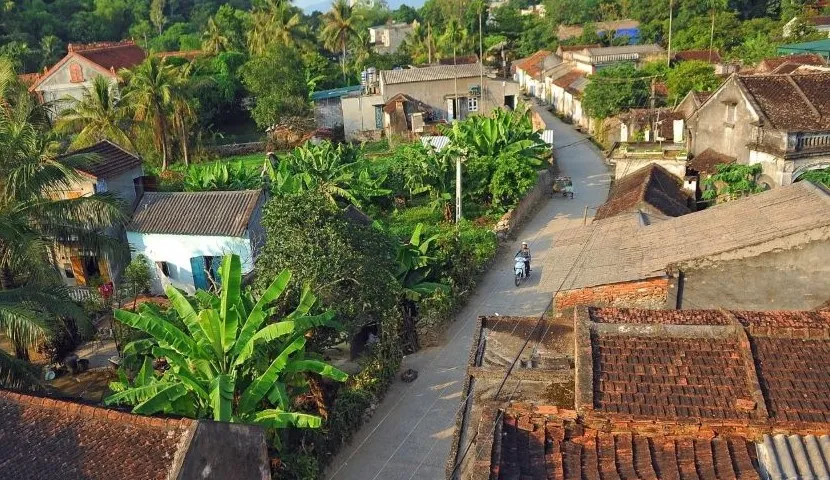







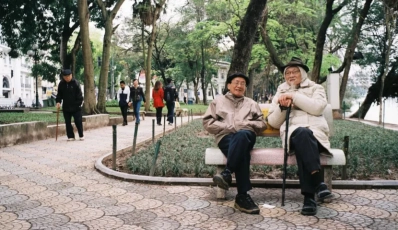
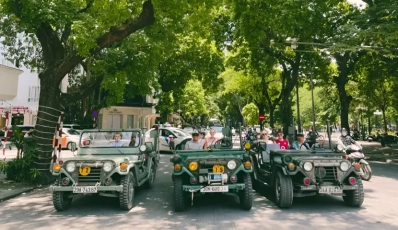
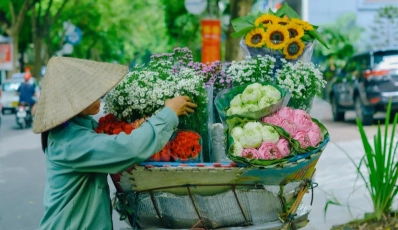
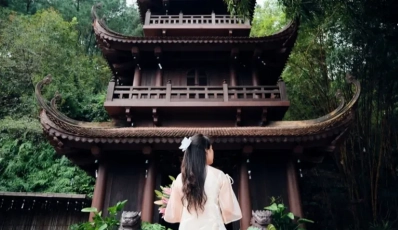
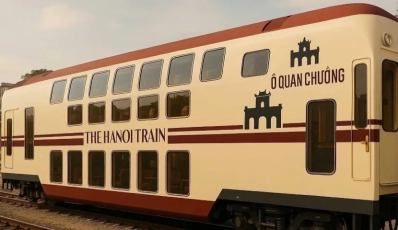
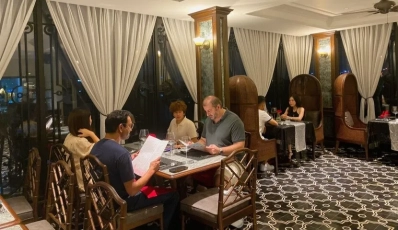
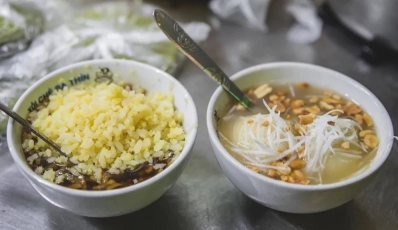
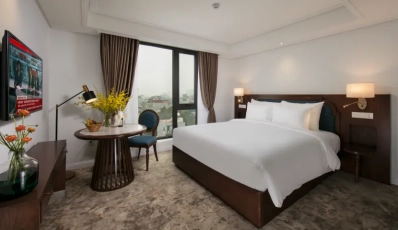
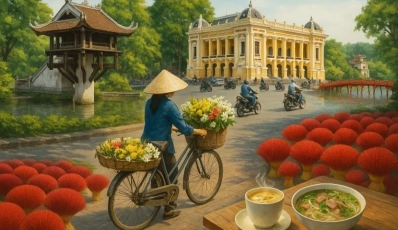
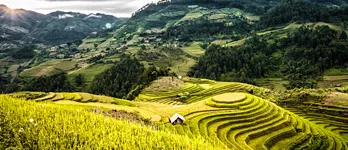
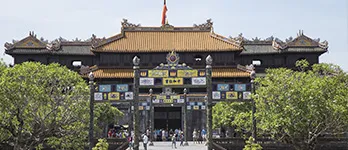


 TRAVELERS' CHOICE 2025
TRAVELERS' CHOICE 2025 